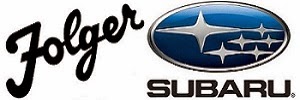 New Year’s resolutions are a long-standing tradition, but most people have discovered that it’s much easier to promise something than to make a permanent habit change. According to a 2013 Forbes article, only 8% of people keep their New Year’s resolutions. Gyms and diet clubs see a spike in membership sales every January. Restaurants sell more salads in January.
New Year’s resolutions are a long-standing tradition, but most people have discovered that it’s much easier to promise something than to make a permanent habit change. According to a 2013 Forbes article, only 8% of people keep their New Year’s resolutions. Gyms and diet clubs see a spike in membership sales every January. Restaurants sell more salads in January.It’s common to experience a moment of inspiration and pledge to turn over a new leaf in the new year, but sustained motivation is much more difficult to achieve. When you make a New Year’s Resolution, you will need a strategy to fulfill on it. Motivation requires energy and effort to sustain. Different goals require different approaches, but here are three basic practices that can be adapted to any area of life.
Look “upstream” of your difficult choices.
Many people fail to accomplish their goals because they depend on their willpower to be strong at the moment when it will predictably be at its weakest. By anticipating your moments of weakness, you can make a better decision that will shield you from temptation at the moment of truth. For example, if you have made a pledge not to overindulge on junk food, it’s much easier not to buy junk food when you are at the grocery store than to buy it and try to restrain yourself from eating it. On the other hand, if you are in sales and have pledged to make more sales calls, you might make this easier by getting in the habit of planning out your sales calls for the next day each evening. For any habit you want to change, look at the decisions leading up to it and see how you can change those decisions for the better.Take steps rather than big leaps.
Most people find that radical changes to daily routines are the hardest to sustain for the long haul. If you don’t exercise at all, resolving to work out for 30 minutes a day, 5 days a week may be a recipe for discouragement. Instead, consider taking one small step forward at a time. For example, you might choose one simple exercise that you can do in one minute and do it first thing every morning. Then, when this habit has become firmly ingrained, add another simple habit.Change your environment.
Making simple changes to your environment is a powerful way to remind yourself of your own commitment to your new way of life. It doesn’t have to be fancy or complicated; even rearranging the furniture in your office will force you to walk a different path to your chair. Even this simple behavior change will create a subtle change in your thinking.Track your habits and results.
Progress toward any goal is often slow and hard to see. When we don’t measure what we do, it’s easy to develop the perception that we aren’t making any progress. Keeping track of your activity is a good way to stay encouraged and hold yourself accountable. Simple is the key word here. You might try, for example, marking a check-box on your wall calendar for every day that you kept your promise to yourself. When you start to see measurable progress, this is a good natural motivator to stay on course.Rome wasn’t built in a day—success requires consistent exertion of effort one day at a time. If you make New Year’s resolutions this year, give some thought to the factors that could derail your resolution and develop a strategy for success.
Happy New Year from all of us at Folger Subaru of Charlotte!

5701 E. Independence Blvd Charlotte, NC 28212
Sales: (888) 703-8351
Service:(866) 306-3293
Fax: (704) 535-8204





















